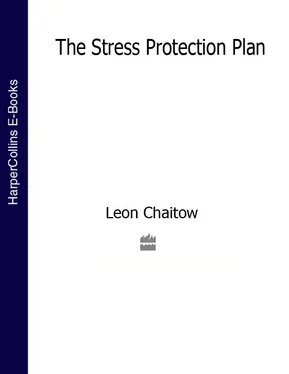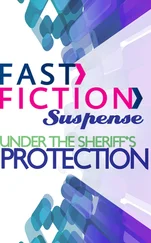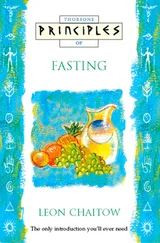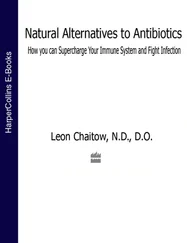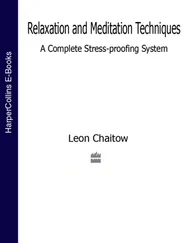Once you realize the role that habit plays in reinforcing undesirable modes of behaviour, it is possible to begin to change. By acting in a manner in which the other person is dealt with as you would wish to be dealt with yourself, and by expressing whatever needs to be said honestly and calmly, the opportunity will grow for a less stressful relationship. Such behaviour changes often spark changes for the better in the other half of the relationship.
It is worth noting that no-one and nothing makes you angry. You do it all on your own. Such feelings are always self-generated, and this is true of most emotions. You choose to be angry, jealous, guilty or bitter and, equally, you choose to be happy, giving, loving etc. Your attitudes and behaviour can be self-modified, and most experiences present a choice of response – one negative and stressful, and the other positive and, potentially, offering the opportunity for growth and self-knowledge – that choice always being yours, and the extent of attention you pay to the stress-reducing measures presented later in this book will be an indication of the extent to which you are prepared to accept responsibility for your life and actions.
Stress is Cumulative
Whilst, in early life, most people can cope with a great deal of emotional and physical trauma, this ability tends to diminish as life progresses. There are, of course, inherited characteristics which have an influence on our capacity for coping. And, there are other factors which will also, to varying degrees, determine to what extent stress can influence our physical and mental health. Among these are nutritional considerations, structural factors, exercise patterns, general fatigue, and the sum total – long-term and in the recent past – of stress. The effects these influences have will become clearer in subsequent chapters. At this stage, it is worth noting that stress is the spur that moves us to action, and that, if responses are not appropriate, it can also become the boulder that crushes.
There is indeed a point at which our body’s capacity for adjustment and adaptation in the face of stress becomes inadequate. When this occurs, health begins to break down in obvious ways. I will cover this in greater detail in the next chapter, but it is important to note that this very noticeable deterioration in health is itself a potent stressor. Anxiety in the face of changes in function and the onset of pain quickens the downward spiral. If you wait for this stage before taking reforming action you may have waited too long. It is, though, possible to regain health from this point, but only with great effort.
There are extrinsic factors which are outside our control, but there are also many aspects of the picture that we can control. There are, of course, states of mind which generate stress, which are outside our conscious control. There are many deep-seated anxiety states and depressions, in which only skilled psychotherapy and counselling can enable us to achieve insights and understanding and, ultimately, a resolution of the problem. Such forms of treatment lie outside the scope of this book, but it is suggested that the general principles here outlined, and the techniques described, can only be of help, even in such cases. However, no-one who is receiving psychotherapy should attempt self-treatment without first consulting his or her practitioner.
CHAPTER 2
The Physical Effects of Stress
Stress is an essential and constant part of life. It is the spur that drives humankind to all achievement, but, when excessive, it can destroy. All the ages and stages of life are transitional; from baby to toddler, from schoolchild to young adult, from active worker to retired pensioner, and so on. Each change has potential stress implications which, when overlayed upon the external and internal stresses of living, are constantly affecting our minds and bodies.
A definition of stress, coined by the great researcher into this ubiquitous phenomenon, Dr Hans Selye, is simply ‘the rate of wear and tear on the body’. All change calls for adaptation. If we go from a warm room into the freezing cold outdoors, adaptive mechanisms immediately become operative to help the body to maintain its equilibrium.
Adaptive processes take place in response to all changes and stressors, whether these are physical, such as heat and cold; chemical, such as polluted air and water, and drugs; or self-generated emotions, such as anger, grief or joy. Anything that is perceived as threatening the mind or body arouses a response of an adaptive or defensive nature instantly.
Homoeostasis
This ability to attempt to maintain the safe equilibrium of the body is known as homoeostasis. It is, for a variety of reasons, not always successful. The biochemistry of the body may be inadequate for the task, perhaps through poor nutrition – and this and other possible factors, including structural integrity, will be considered later. If the response is inadequate, or if perception of threats is inaccurate, then unbalanced and faulty body adjustments may occur with harmful consequences.
The normal stress reaction is seldom the result of the outside agency, but rather it is the system’s reaction to it. Whether the stressor is physical, such as sudden exposure to cold; or psychological, such as an unexpected crisis or a change of responsibility at work, or unpleasant news, the body begins to make biochemical changes in response to its perceived needs. Such changes take place to a greater or lesser degree almost constantly throughout life.
If a stressor is prolonged, continuous or extreme in its nature, then the defensive mechanisms of the body become even more active. In response to intense heat, changes take place in the blood chemistry and circulatory system in order to cool the body by means, for example, of extra fluid loss and evaporation through the skin. Should this fail to achieve the desired effect, then an even greater defensive effort might involve fainting and temporary unconsciousness, in order to reduce all bodily functions to a minimum. Such homoeostatic efforts, though, fall short of being actual stress reactions, unless prolonged.
Fight or Flight
In response to any stress or extreme the body undergoes a series of changes which Selye has grouped under the heading of the ‘fight or flight’ reaction. Quite logically, the response to being confronted with real physical danger, such as the appearance of a man-eating animal, would be to attack it or to escape from it. Whichever was the choice, the body would require instantly available energy, strength and concentration. There would be no time for slow deliberation or stages of progressive arousal, for by that time the adversary would be beginning its meal! If an appropriate response (fight or flight) to the stressor were forthcoming, then the biochemical and other changes triggered by the initial shock, would be utilized, and no ill-effects would be felt.
Today, people are seldom faced with such life and death stress situations. However, the mind and body may feel threatened in many other ways than by a man-eating tiger. Any perceived (accurately or not) threat or danger to the mind or body will produce a similar ‘fight or flight’ reaction, and there may be ways of producing an appropriate response to these. For instance, someone might say something which is perceived as being insulting and hurtful. The stress reaction, which includes a tensing of the muscles as well as biochemical (hormonal and other) changes, could simply be ‘bottled up’ and remain as an extra degree of muscular tension. If a suitable verbal and/or physical response were to be found, however, then again the preparation for action would have been expressed and used, and no ill-effects would result.
Читать дальше
